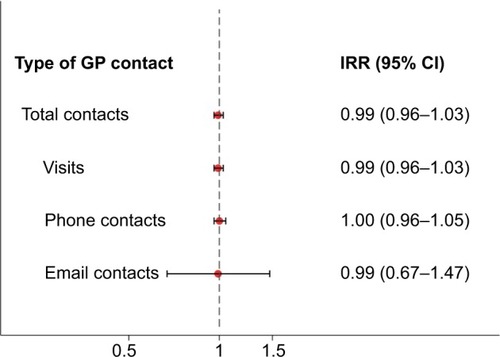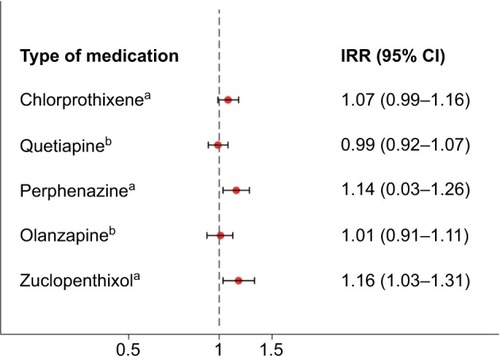Figures & data
Table 1 Characteristics of the children prenatally exposed and unexposed to AP medication and their mothers at the time of the index pregnancy; mean (SD) or proportion
Figure 1 Type of GP contact by age of the children in 1-year intervals comparing prenatally AP-exposed and AP-unexposed children; unadjusted mean number of contacts in top panels and adjusted IRRs (95% CI) in bottom panels.
Abbreviations: AP, antipsychotic; CI, confidence interval; GP, general practitioner; IRR, incidence rate ratio.

Table 2 IRR (95% CI) for type of GP contact and services provided comparing prenatally AP-exposed children to AP-unexposed children
Table 3 IRR (95% CI) for type of GP contact comparing prenatally AP-exposed children to AP-unexposed children stratified on maternal diagnosis of severe psychiatric disorder
Table 4 IRR (95% CI) for type of GP contact comparing prenatally AP-exposed children to children of mothers who used AP medication before, but not during pregnancy
Figure 2 IRR (95% CI) for type of GP contact comparing children prenatally exposed to AP medication with their unexposed siblings.
Abbreviations: AP, antipsychotic; CI, confidence interval; GP, general practitioner; IRR, incidence rate ratio.

Figure 3 Type of AP medication and IRR (95% CI) for total GP contacts.
Abbreviations: AP, antipsychotic; CI, confidence interval; GP, general practitioner; IRR, incidence rate ratio.

